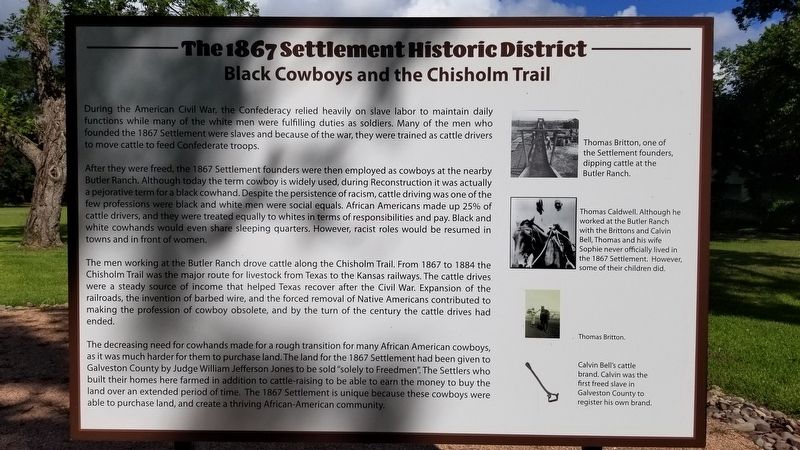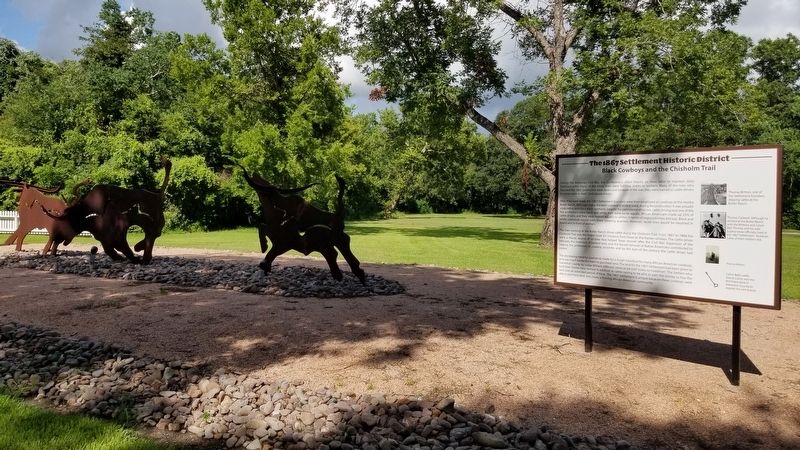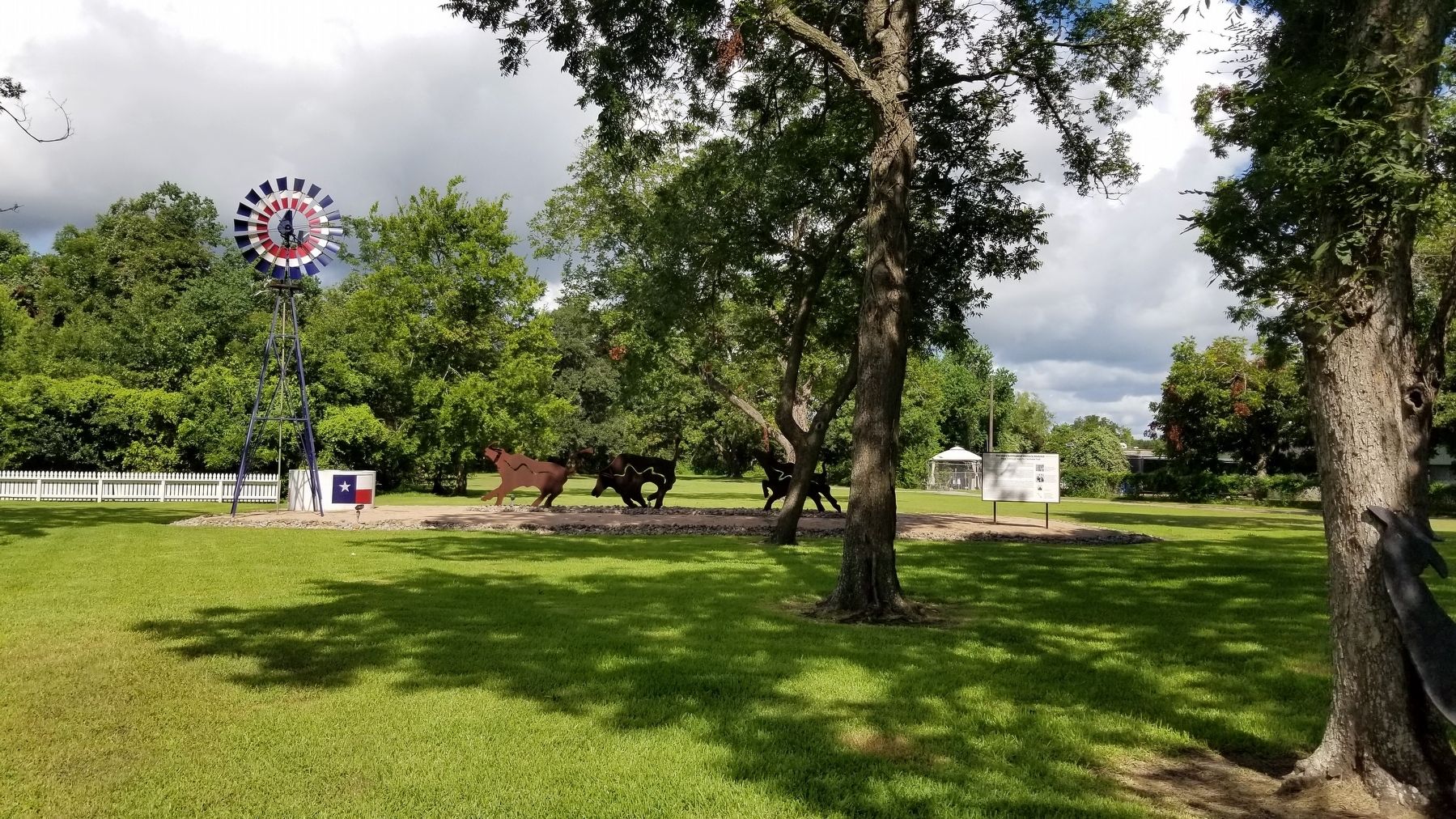Texas City in Galveston County, Texas — The American South (West South Central)
The 1867 Settlement Historic District
Black Cowboys and the Chisholm Trail
After they were freed, the 1867 Settlement founders were then employed as cowboys at the nearby Butler Ranch. Although today the term cowboy is widely used, during Reconstruction it was actually a pejorative term for a black cowhand. Despite the persistence of racism, cattle driving was one of the few professions were black and white men were social equals. African Americans made up 25% of cattle drivers, and they were treated equally to whites in terms of responsibilities and pay. Black and white cowhands would even share sleeping quarters. However, racist roles would be resumed in towns and in front of women.
The men working at the Butler Ranch drove cattle along the Chisholm Trail. From 1867 to 1884 the Chisholm Trail was the major route for livestock from Texas to the Kansas railways. The cattle drives were a steady source of income that helped Texas recover after the Civil War. Expansion of the railroads, the invention of barbed wire, and the forced removal of Native Americans contributed to making the profession of cowboy obsolete, and by the turn of the century the cattle drives had ended.
The decreasing need for cowhands made for a rough transition for many African American cowboys, as it was much harder for them to purchase land. The land for the 1867 Settlement had been given to Galveston County by Judge William Jefferson Jones to be sold "solely to Freedmen". The Settlers who built their homes here farmed in addition to cattle-raising to be able to earn the money to buy the land over an extended period of time. The 1867 Settlement is unique because these cowboys were able to purchase land, and create a thriving African-American community.
Captions
Upper Right: Thomas Britton, one of the Settlement founders, dipping cattle at the Butler Ranch.
Middle Right Large: Thomas Caldwell. Although he worked at the Butler Ranch with the Brittons and Calvin Bell, Thomas and his wife Sophie never officially lived in the 1867 Settlement. However, some of their children did.
Middle Right Small: Thomas Britton.
Lower Right: Calvin Bell's cattle brand. Calvin was the first freed slave in Galveston County to register his own brand.
Erected by 1867 Settlement Historic District and Texas City.
Topics. This historical marker is listed in these topic
lists: African Americans • Animals • War, US Civil. A significant historical year for this entry is 1867.
Location. 29° 22.957′ N, 94° 58.65′ W. Marker is in Texas City, Texas, in Galveston County. Marker is at the intersection of South Bell Drive and Eunice Street, on the right when traveling south on South Bell Drive. The marker is located in a small historic park. Touch for map. Marker is at or near this postal address: 117 South Bell Drive, Texas City TX 77591, United States of America. Touch for directions.
Other nearby markers. At least 8 other markers are within 2 miles of this marker, measured as the crow flies. Settlement Community (within shouting distance of this marker); 1887 Frank Sr. and Flavilla Bell House (within shouting distance of this marker); 1926 Frank, Jr. and Ollie Caldwell Bell House (within shouting distance of this marker); Phillips Memorial Cemetery (approx. 0.2 miles away); a different marker also named Phillips Memorial Cemetery (approx. 0.2 miles away); La Marque (approx. 0.7 miles away); Frank Bell Jr. (approx. one mile away); Paul's Union Church (approx. 1.9 miles away). Touch for a list and map of all markers in Texas City.
Credits. This page was last revised on December 1, 2021. It was originally submitted on November 30, 2021, by James Hulse of Medina, Texas. This page has been viewed 290 times since then and 45 times this year. Photos: 1, 2, 3. submitted on December 1, 2021, by James Hulse of Medina, Texas.


